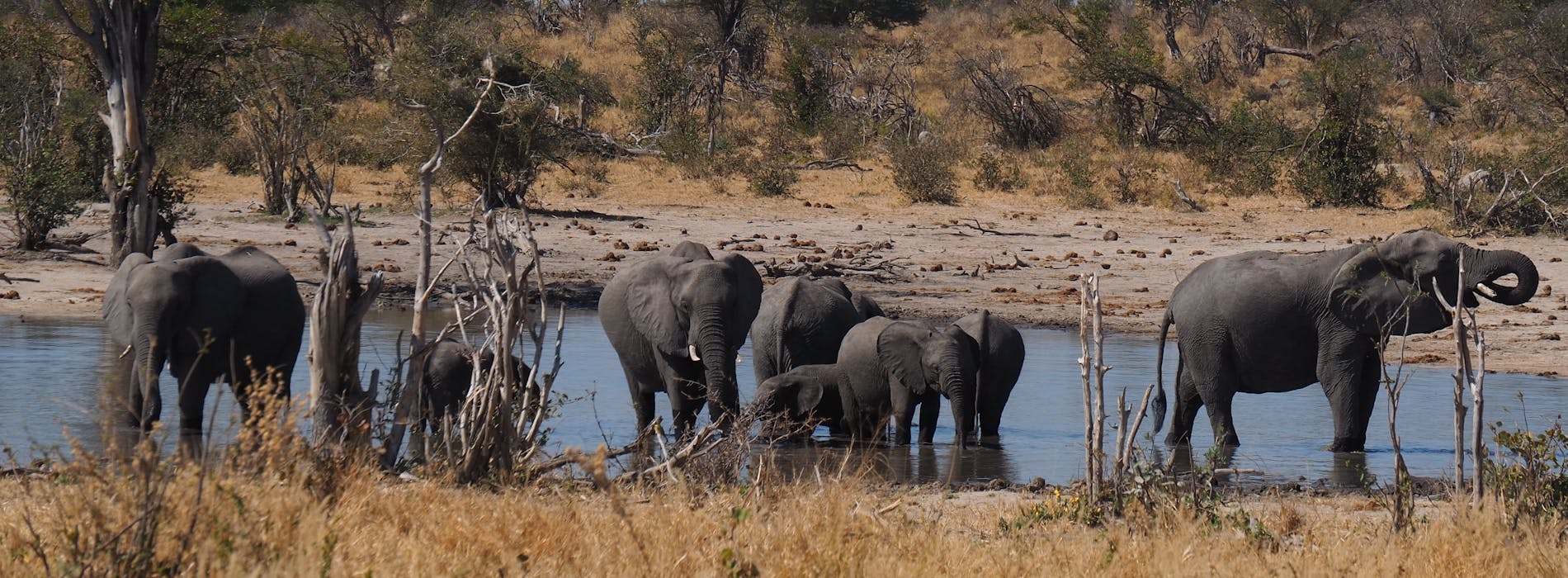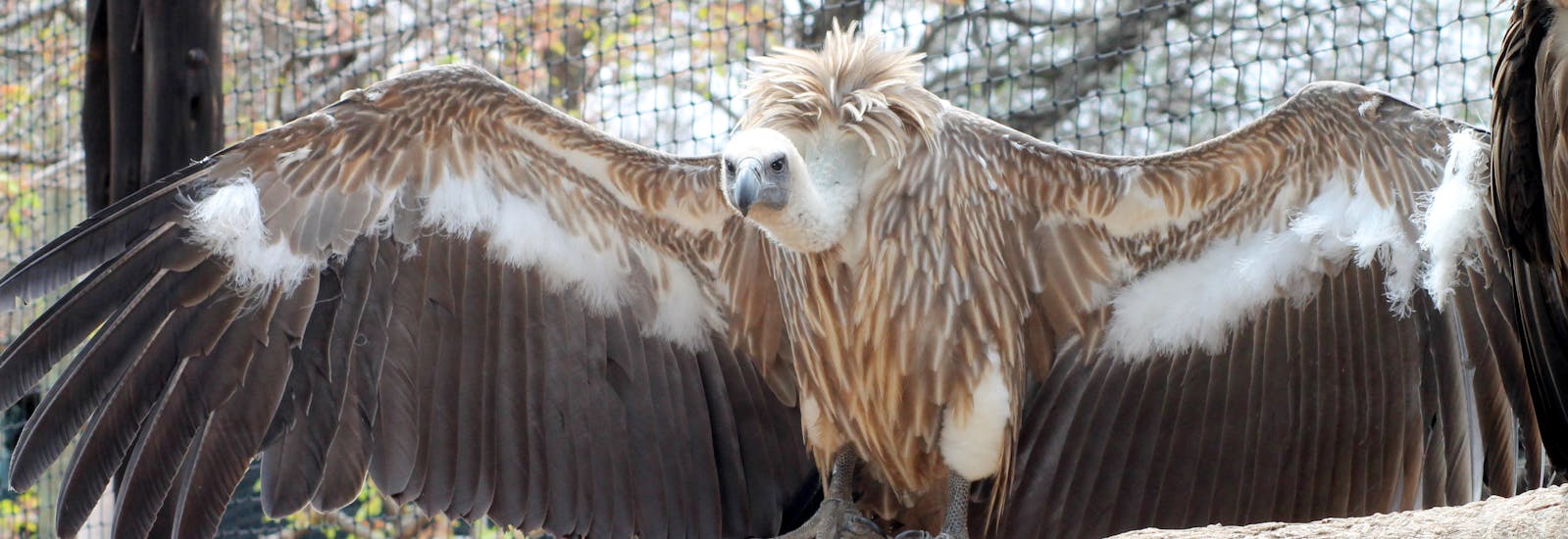
Moholoholo: “We're losing a significant percentage of the total vulture population”
South Africa is renowned for its incredible diversity of raptors, boasting over 80 species! From long-legged Secretarybirds and vibrant Bateleurs to an array of vultures, these majestic birds can be found in diverse habitats across the continent. Yet, despite their magnificence, these iconic species are quietly being lost from Africa's skies.
Raptor: A bird, such as an eagle or a hawk, that kills and eats small birds and animals.
A recent study by researchers at The Peregrine Fund and the University of St Andrews assessed changes in the population of 42 raptor species across large parts of the African continent and included countries such as Kenya, Botswana, and South Africa, focusing on data from 1969 to 2020. It discovered declines in nearly 90% of the species studied. Even more worrying, was that over two-thirds of the species would be classed as Critically Endangered (CR) by the International Union for Conservation of Nature (IUCN).
The study’s findings highlight various challenges affecting these birds such as an increased reliance on protected areas and a reduction in habitat availability. Human activities also impacted raptor populations, through poisoning, collisions with energy infrastructure such as powerlines, bird killings stemming from cultural beliefs, as well as shooting and trapping.
Martial Rappo, Manager at Moholoholo Wildlife Rehabilitation Centre, is one of the conservationists at the forefront of preventing the loss of raptors in South Africa.
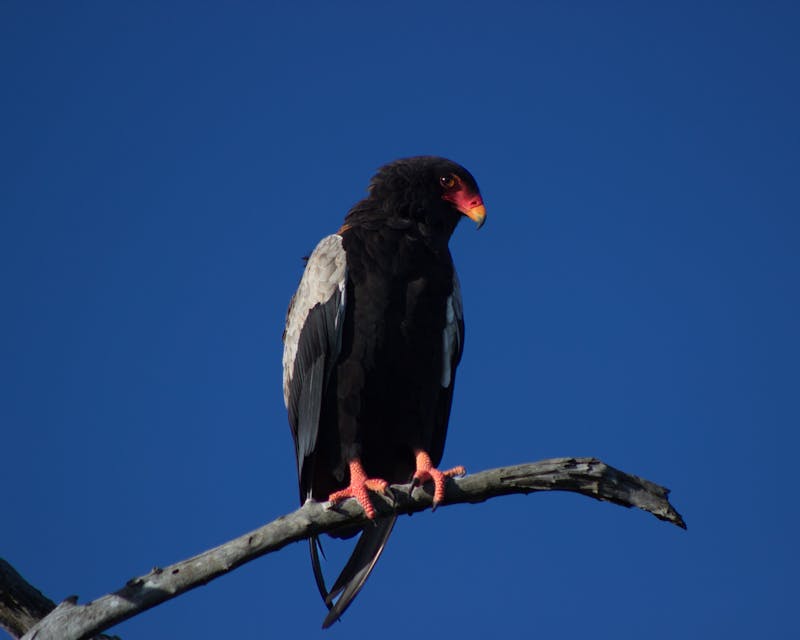
We're losing a significant percentage of the total vulture population in the Kruger National Park every year. It's quite horrifying to think about it.
We spoke with Martial about The Peregrine Fund and the University of St Andrews' findings, along with Moholoholo's recent review of admitted raptors into the centre. Moholoholo's findings were also presented at the Endangered Wildlife Trust’s (EWT) Birds of Prey Conference in 2023.
---
Q&A with Martial Rappo
So, Martial tell us about what your recent review found:
"We conducted a review of the causes of admission of raptors to our facility in the last 20 years. This confirmed that the majority of raptors that were admitted to Moholoholo were brought in as a result of anthropogenic impacts. The leading causes of admission were collisions with powerlines, as well as with vehicles, fences, or buildings. Another significant threat, and one that is becoming increasingly widespread over large parts of the continent, is wildlife poisoning."
Anthropogenic: Referring to environmental change caused or influenced by people, either directly or indirectly.
Do your findings and the study from The Peregrine Fund and the University of St Andrews show similarities?
"The St Andrews study highlights threats to southern African raptors, which are very similar to the admission causes of the same species at Moholoholo in Limpopo, South Africa. This shows that raptor loss is a continent-wide conservation concern."
This is worrying, but how serious is it if South Africa loses its raptors?
"A lot of people do not know this, and it is incredibly interesting, but raptors like vultures and eagles are a big indicator of a healthy ecosystem. As an indicator species, if there is not something right in an environment, raptors moving out of the area is the first sign. Vultures specifically play such an important role in keeping an ecosystem healthy. They do this by scavenging dead meat, which if left would rot and spread diseases.
"We saw this happen in India where their vulture population collapsed due to them ingesting diclofenac (an antibiotic) in the cattle carcasses, which led to their deaths. As a result, there was a significant rise in diseases such as rabies as stray animals consumed the rotting meat that vultures would typically scavenge, and these stray animals then came into contact with humans. As such, India's healthcare system struggled with the surge in patient admissions. So, I think people greatly underestimate vultures' impact on an ecosystem and local communities."
Indicator species: A species or group of species chosen as a measure of the state of an ecosystem or of a certain process within that ecosystem.
The study by The Peregrine Fund and St Andrews also mentioned that "persecution through shooting, trapping, poisoning" are additional threats to raptors. Is this something you are also seeing at Moholoholo?
"Unfortunately, yes. Many of the raptors affected by poisoning are already critically endangered, and large poisoning events have long-lasting impacts that can regionally affect populations of species. Of these species, vultures are the most widely affected, whilst other birds of prey including the Bateleur and Tawny Eagle also frequently fall victim to this.
"Although there are many reasons for these “raptor persecution” events, in northeastern South Africa they appear to be linked to the targeting of large carnivores, with the illegal trade in body parts. These raptors may be eating the poisoned meat set out for these predators or have been victims of sentinel poisoning. Sentinel poisoning is the deliberate poisoning of vultures to hide the location of a carcass, as circling vultures indicate to rangers that a poaching incident has occurred. This poses a very serious motivation for poisoning. If the poacher can remove this natural identification tool, the vultures, then they have more time and a better chance of getting away without being caught."
Those are very similar findings! In its conclusions, the study from The Peregrine Fund and St Andrews emphasised the importance of reducing collisions with energy infrastructure as a way to support raptor conservation. From your review, do you think this will help?
"One of the leading causes of admission into Moholoholo from 2003 to 2023 was collisions with energy infrastructure. Energy infrastructure can impact birds in multiple ways, with collisions with powerlines often resulting in severe trauma such as wing breaks.
"Electrocutions from unsafe energy infrastructure are also a prominent concern. It’s important to note that many, if not most of these threats, are vastly under-recorded. Moholoholo took in an African Fish Eagle last year in June after it was electrocuted by a loose hanging power line and every single flight feather was burned away. However, after a lot of rehabilitation work, we can proudly say that he is being released at the end of this month."
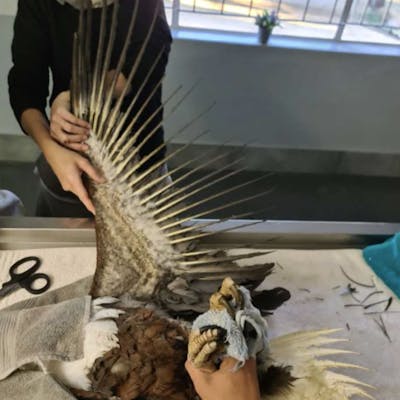
That is amazing to hear! How often does Moholoholo succeed in releasing raptors back out into the wild?
"In Moholoholo’s review, we found that with the many vultures we have treated over the years, we have had an extremely high success rate of release. If people bring us in a poisoned vulture that's still alive, we can get them back into the wild again. I'm very, very happy to say today that after reviewing those admission forms and going through everything, the most common outcome for all the birds was actually to be released back into their natural environment."
Moholoholo does amazing work for the raptors and wildlife brought into the centre! A final point from the Peregrine Fund and St Andrews study was the need for increasing public involvement in raptor conservation efforts. Does Moholoholo also assist with this?
"Yes, there is a huge need for increased education among the public about raptors and their threats. Next to rehabilitating animals, Moholoholo’s other main goal is to educate the public. We offer guided tours to the public through the sanctuary side of the centre. We’ve had up to 20,000 local school kids visiting the centre to learn about the animals. Due to socio-economic factors, a lot of these children don’t have the chance to visit local game reserves to observe and learn about wildlife. People will only conserve and protect what they like and feel compassion for, which they cannot do without understanding it first. Therefore, it is extremely important to educate the people living closest to these habitats."
Socio-economic: The differences between groups of people caused mainly by their financial or social situation.
After our conversation with Martial, he was contacted by the EWT to assist with a major poisoning in the northern part of the Kruger National Park. Upon arrival, many individuals were already deceased including buffalo, hyena, jackal, 69 white-backed vultures (critically endangered), four lappet-faced vultures (endangered), two bateleur eagles (endangered), maribou stork, cape vulture, tawny owl, and two hooded vultures (critically endangered).
However, they were able to rescue two white-backed vultures, which are currently at the centre receiving treatment. This shows just how serious the situation is becoming, and the importance of initiatives like Moholoholo to help protect South Africa’s raptors.
Comparing the study conducted by St Andrews and The Peregrine Trust, alongside Moholoholo's review of raptor admissions to the centre in the last 20 years, highlights the critical importance of raptor conservation across Africa over the past two decades. We are incredibly grateful for the remarkable efforts of Moholoholo in their daily work to rehabilitate raptors and other wildlife, while also playing a vital role in community education to raise awareness about these conservation issues.
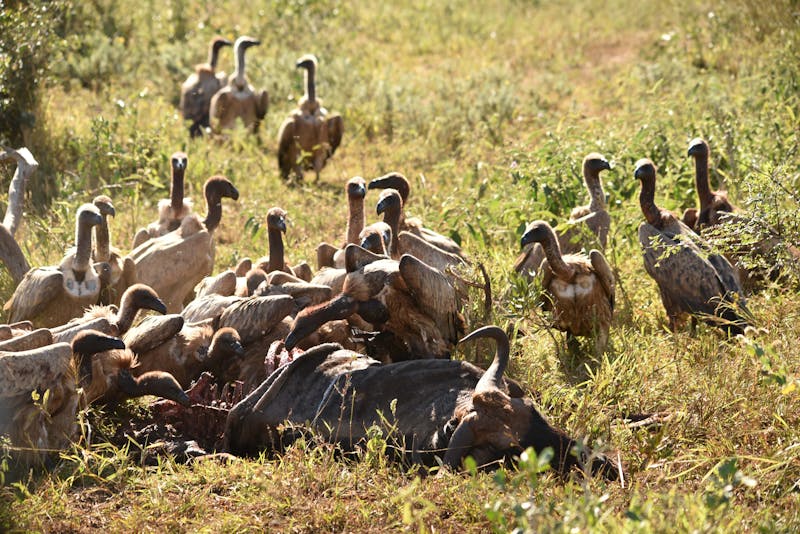
Interested in supporting raptor conservation efforts?
If Moholoholo's work has ignited a passion within you and you're eager to contribute or learn more about raptor conservation and the broader wildlife initiatives supported by Moholoholo, you can be a volunteer!

